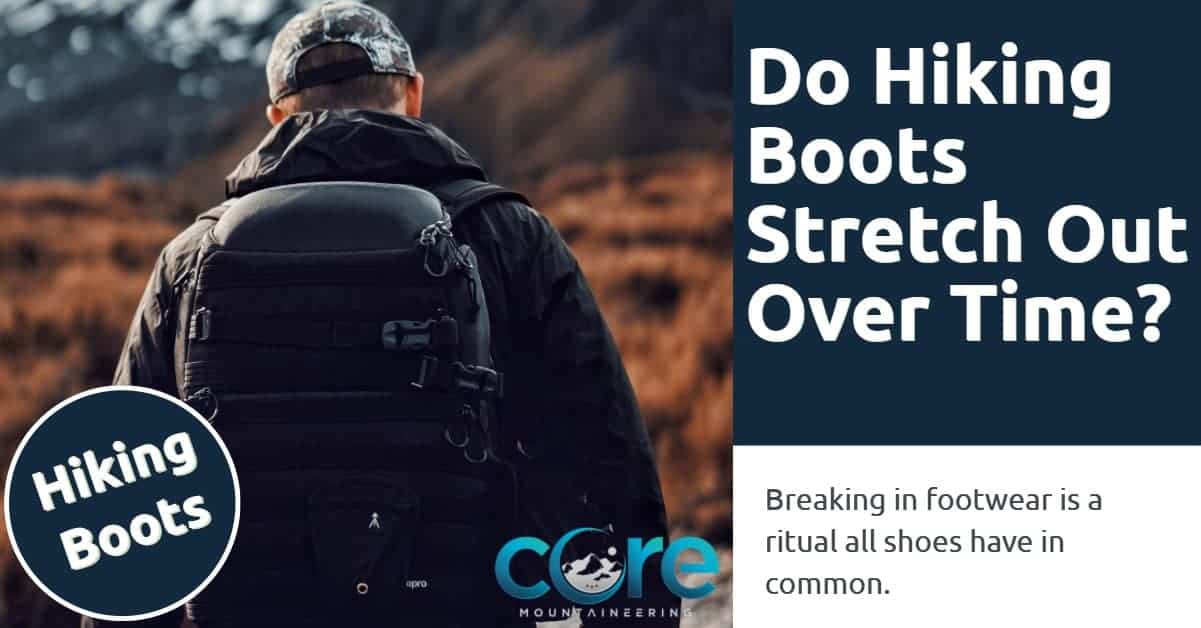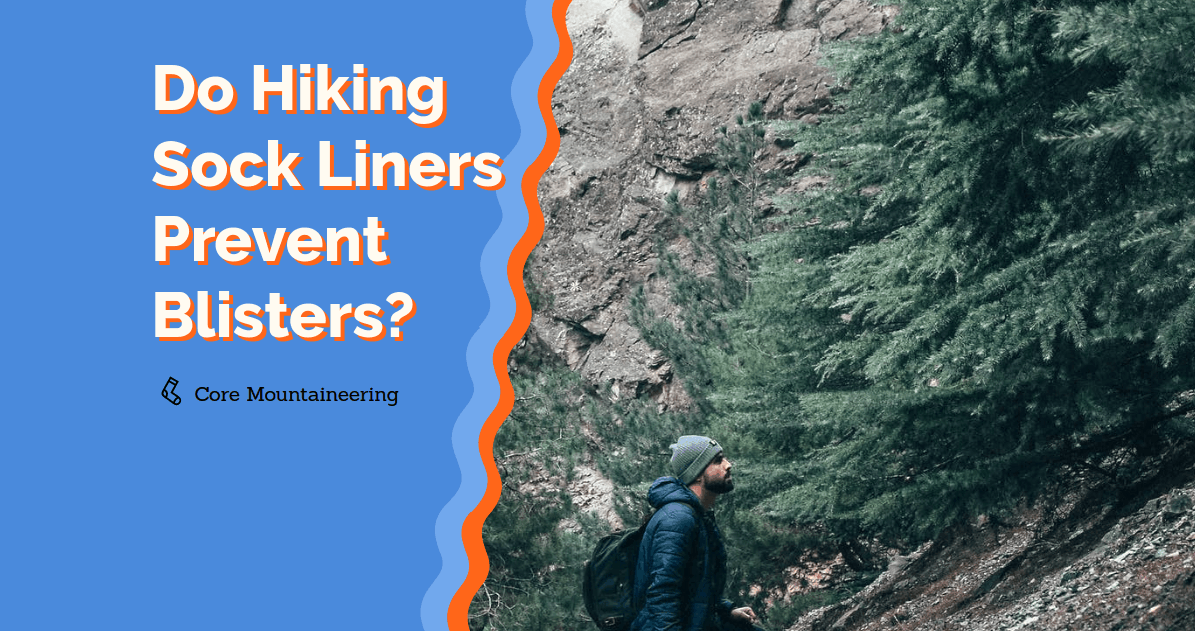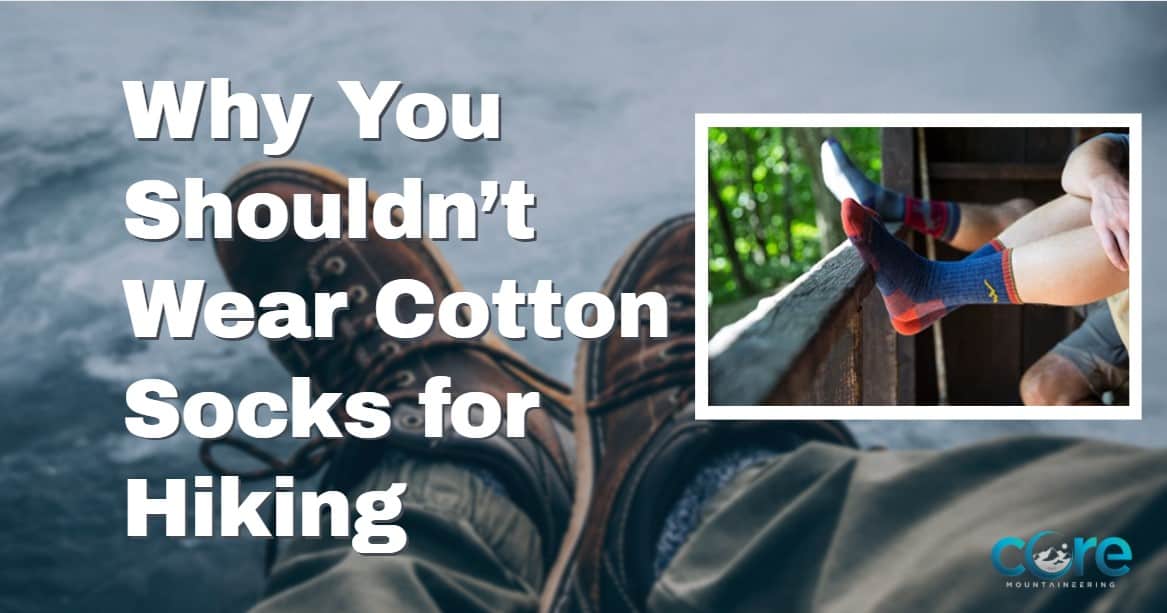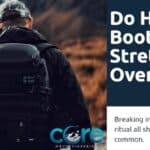If you’ve been cooped up in your home for a while, and a long, wholesome hike is an exciting cure for cabin fever.
You’ve got a fully charged phone, plenty of water for the walk, and a handy pair of headphones; these are ingredients for a wonderful hike.
Whether you’re a seasoned trekker, backpacker, or casual enthusiast, everyone knows that footwear is most important.
A good pair of boots are essential for wilderness activities.
But the more you use your boots, you’ll notice that they do indeed stretch over time. When boots are new, this process is called “breaking-in.” It’s when your new shoes mold and stretch around the shape of your foot.
Why Do I Need To Break in My Hiking Boots?
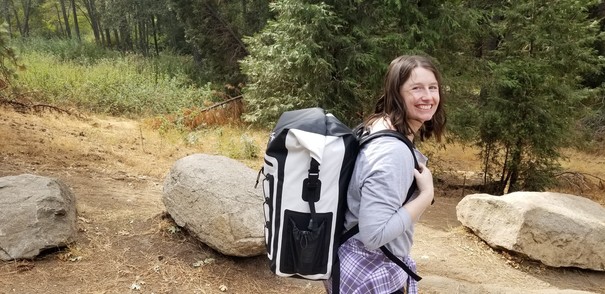
If you’ve ever hiked in non-broken in boots, I don’t need to tell you why to break them in; your blisters have already informed you.
Breaking in footwear is a ritual all shoes have in common.
For starters, they need to be comfortable! Boots, especially leather, need to expand and retract, creating softness. Stiff boots cause friction on your feet, causing blisters in really annoying places. The constant friction can even break the skin.
We’ve all had those little cuts on the back of our ankles.
Your boots may be the perfect fit, but they’ll need time to mold and shape. Your foot will actually develop callousness that syncs with your new boots.
New hiking boots will have stiffer support until broken in, potentially causing ankle damage.
An injury from unbroken boots might sound a little dramatic, but minor structural injuries accompany the risk of overexertion in shiny new boots. Do not overlook this step of the process.
A few years ago, I was a bit too eager to jog in my spanking fresh New Balance running shoes. Instead of taking it easy and slowly introducing them to the trails, I hit the ground running (literally) and performed my full workout. My feet hurt so bad afterward that I was out of commission for almost two weeks.
Heavy use of unbroken boots can even cause back and upper leg pain.
Don’t be like me, be patient and break in your boots.
Do you ever get blisters while hiking? If you do, please take a look at our article, Do Hiking Sock Liners Prevent Blisters? What Hikers Really Use.
How to Break-In Boots
There are several fiercely debated methods of boot breaking, all with extensive dos and don’ts.
The easiest (and most common) advice I can give is to wear your boots.
It’s important not to overdo but wearing new boots a couple of hours a day will help them get to know your foot.
While wearing them around the house will help, the trails’ rugged rocky terrain will break in your boots more effectively. After all, that’s what they’re for. So, go ahead and test-drive the trails straight from the store, but consider condensing down your route into a shorter trek. Be cautious and listen to your body.
Make sure your laces are correctly fashioned and tied tight. A boot is only good as its laces.
A tip to help speed up the process is wearing thick socks. The extra volume inside the boot helps better stretch the material. If the boots have high tops, make sure your socks are long enough to cover your ankle. The stiff collar may scrape and irritate the area.
Now, you might be looking for craftier ways to break your boots. There are tons of out-of-the-box methods you can try!
For example, try using Shoe Stretchers. These tools are fitted inside shoes and are gradually stretched out. Usually, it’s actually shaped like a foot and then expanded like a vice grip. You can find some boot stretchers here.
Stretch gradually. Otherwise, you risk damage to the boot.
If you’re going the product route, you might want to try Boot Softener/Stretcher Liquid. This often comes in a spray or sometimes aerosol. You apply it directly to the tough problem areas, and it helps soften and stretch the material. I’ve broken-in leather boots in as little as three days using this stuff. But be wary of what material you’re working with. Every brand is different.
If leather footwear is your style, consider Leather Conditioner. Conditioner keeps leather moisturized and soft, which is precisely what you want for breaking boots. Just apply a little on a towel and lightly dab-resistant areas.
Now that we’ve discussed the dos, let’s talk about the dont’s.
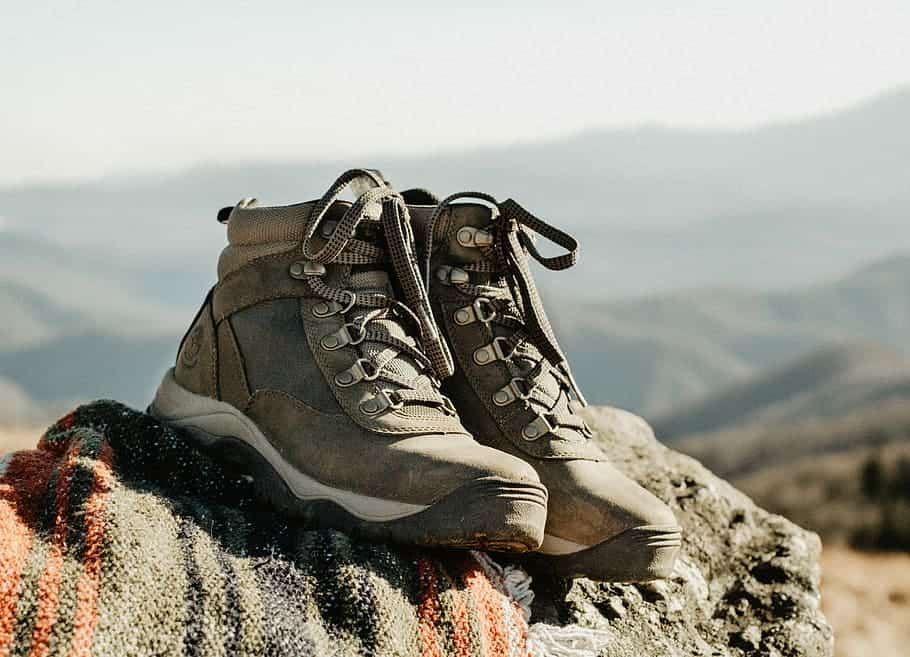
First and foremost, do not use water, especially with leather boots. While little amounts of moisture don’t hurt anything, filling or submerging your boots will cause warping. Leather can only retain a certain amount of water.
I know this sounds crazy; I mean, who would actually fill their boots with water. Well, in the age of the internet, anything is possible.
For example, the Freezer Method. This is an elaborate and controversial practice straight out of the DIY realm of problem-solving. The freezer method consists of lining the inside of the boot with a plastic zip-lock baggie.
You then (very carefully) pour water into the bag. Seal it and place the boots into the freezer. When it freezes, the ice expands and stretches starchy areas. Although it might work, the risk (and impracticality) isn’t worth the yield.
Then we have the Hair Dryer method—another farce bobbing around online. Applying heat to boots will only dry out and crack the material, especially if you’re working with leather.
A good rule of thumb is avoiding any tips suggesting a “quick fix.” Forcing the process only puts your brand-new shoes at risk. Merely taking a few short walks will do the trick! But don’t overdo it and wear them constantly. You might break them in quicker, but the pain in your feet will be a patient reminder.
Suppose you’re wondering how hiking boots are made. Outside has a great article about that.
How Long Does It Take to Break Hiking Boots In?
Typically shoes get a lot comfier after 80 to 100 hours of use but may not be fully broken in for 2 to 4 weeks.
But this depends on the quality, material, and how active you are.
The quality will always make or break. Low-quality boots will fold and quickly lose shape, almost like overly broken-in. You want to lose that stiff and starchy feeling, but not at the expense of firm support. Spending just a little more for quality always pays forward.
What material are your boots made of? Leather? Synthetics? While synthetic material (used mostly for athletic boots) stretches and breaks in much quicker, leather (hiking boots) is sensitive. It retracts more after expanding, taking a little longer to break in.
How active are you? I doubt you want to neglect longer hikes while your new boots are breaking in. It’s okay, use your old boots for now. Just make sure you’re making time to walk in the new ones, whether that be a shorter trail or just chores around the house.
What socks do you wear while hiking? If it’s cotton socks, I have news for you. Take a look at your article, Why You Shouldn’t Wear Cotton Socks for Hiking – What You Should Wear Instead.
When Is It Time for New Boots?
Well, I guess an obvious answer would be if you can see your foot. But not every sign is so obvious.
Be vigilant for any holes or tears in the fabrics. Big leather boots sometimes have folds and flaps that can conceal damage.
Are your socks not so dry after a rainy day? Watch out for breaches on the sides and heel. If you find yourself with a leaky pair of shoes, it’s time to shop.
Find yourself slipping around a little bit more than usual? The tread may be wearing down. Nice boots will last a long time with proper care, but the tread will begin to degrade after a certain amount of use. Solve this issue quickly.
Maybe your once-comfy boots don’t feel as fitting as they used to. The sole might be grinding down. Soles take the brunt of the pressure when walking. Worn soles might even cause minor injuries with continued use.
Make sure to watch your laces and lace hoops. Frayed and damaged laces prevent proper lacing causing loss of support. The excellent news about laces is that you simply replace them! Much cheaper than a whole new pair of boots.
Be wary when storing leather boots. Leather is a sensitive material that responds to humidity.
Finding the Perfect Pair of Boots
Before you start breaking in boots, you need to find your perfect fit.
The process essentially starts at the store. Your choice. After all, boots are typically used for heartier activities, so it’s okay to be a little picky.
There’s a rumor that buying one size larger is beneficial. This may work for some, but often a shoe that is too large is just as bad as one too small. Get a snug fit with just enough wiggle room for the toes.
Don’t ignore the slightest discomfort in exchange for preference. Don’t settle just because those coffee brown leather boots are just what you’re looking for. Find a pair that fits.
Here’s a pro tip, never shop for footwear online. You never quite know what you’re going to get. I’ve ordered shoes that were exactly my size that still didn’t fit. Plain and simple, it isn’t worth the hassle.
Have you ever wondered why hiking boots are on the ugly side? Then check out our article, Why are hiking boots so ugly?

